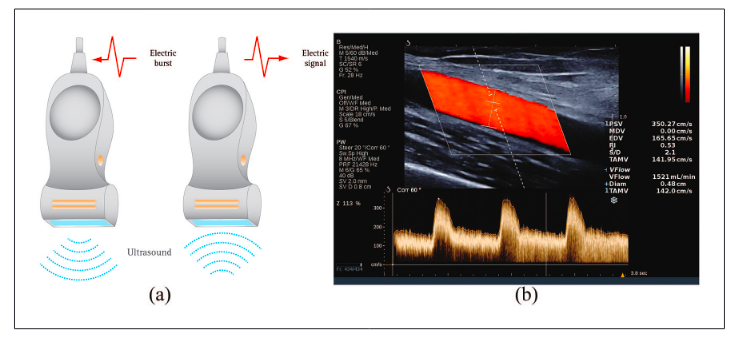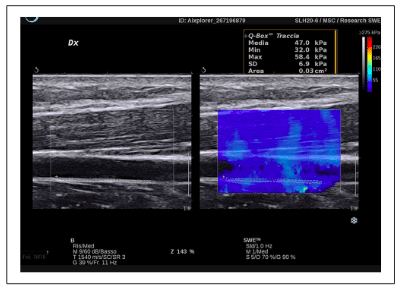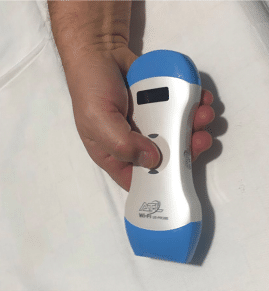
The role of Doppler ultrasonography in vascular access surveillance— controversies continue
Jan Malik, Carlo Lomonte, Mario Meola , Cora de Bont , Robert Shahverdyan, Joris I Rotmans , Francois Saucy, Tamara Jemcov and Jose Ibeas
Abstract
Chronic hemodialysis therapy required regular entry into the patient’s blood stream with adequate flow. The use of arteriovenous fistulas and grafts is linked with lower morbidity and mortality than the use of catheters. However, these types of accesses are frequently affected by stenoses, which decrease the flow and lead to both inadequate dialysis and access thrombosis. The idea of duplex Doppler ultrasound surveillance is based on the presumption that in-time diagnosis of an asymptomatic significant stenosis and its treatment prolongs access patency. Details of performed trials are con- flicting, and current guidelines do not support ultrasound surveillance. This review article summarizes the trials performed and focuses on the reasons of conflicting results. We stress the need of precise standardized criteria of significant access stenosis and the weakness of the metaanalyses performed.
Keywords
Hemodialysis, hemodialysis vascular access, ultrasonography, arteriovenous fistula, arteriovenous graft
Date received: 19 December 2019; accepted: 17 April 2020
Introduction
Only few other hemodialysis access topics are more pas- sionately debated as ultrasound surveillance. The invention of arteriovenous fistulas (AVFs) and arteriovenous grafts (AVGs) as vascular access for hemodialysis considerably decreased patients’ morbidity and mortality. The patency of AVFs and AVGs is being threatened mostly by the development of a stenosis, which can lead to access dys- function, inadequate dialysis, and/or access thrombosis. The latter represents an acute risk of access abandonment, and its therapy is more complicated and painful and cost- lier than the treatment of a (significant) stenosis. It seems, therefore, logical that treating significant stenoses before thrombosis occurs should be beneficial. However, it remains unclear when the risk of acute thrombosis due to stenosis is high enough to justify the preemptive interven- tion. Moreover, the definition of a hemodynamically sig- nificant stenosis varies between centers.
Stenosis is a vessel narrowing that could cause signifi- cant pressure drop and flow volume decrease, but also
1 Center for Vascular Access, General University Hospital and First Faculty of Medicine, Charles University, Prague, Czech Republic
2 3rd Department of Internal Medicine, General University Hospital and First Faculty of Medicine, Charles University, Prague, Czech Republic
3 Division of Nephrology, Miulli General Hospital, Acquaviva delle Fonti,
Italy
4 Institute of Life Sciences, Sant’Anna of Advanced Studies and
Department of Internal Medicine, Pisa University, Pisa, Italy
5 Vascular Laboratory, Bravis Hospital, Bergen op Zoom, The
Netherlands
6 Vascular Access Clinic, Asklepios Clinic Barmbek, Hamburg, Germany 7 Department of Internal Medicine, Leiden University Medical Center, The
Netherlands
8 Service of Vascular Surgery, Department of Heart and Vessels,
University Hospital, Lausanne, Switzerland
9 Department of Nephrology, Clinical Hospital Centre Zemun, Belgrade,
Serbia
10 School of Medicine, University of Belgrade, Belgrade, Serbia
11 Nephrology Department, Parc Taul ́ı University Hospital, Parc Taul ́ı
Research and Innovation Institute (I3PT), Autonomous University of Barcelona, Barcelona, Spain
Corresponding author:
Jan Malik, 3rd Department of Internal Medicine, General University Hospital and First Faculty of Medicine, Charles University, U nemocnice 1, 128 08 Prague, Czech Republic.
Email: jan.malik@vfn.cz








